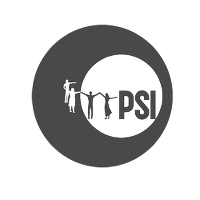By Emily Mattheisen, FIAN International
Rather than reaching the goal of ending hunger that is called for in SDG 2, the world is on track to increased and more exacerbated food insecurity. Since the adoption of the SDGs in 2015, global rates of food insecurity have increased – with some 815 million people facing hunger and malnourishment, [fn] FAO/IFAD/UNICEF/WFP/WHO (2017). [/fn] and it is estimated that this number will continue to increase. The present understanding of the root causes of hunger and malnutrition and of the policy solutions that can support long-term, structural change, is not sufficiently up to speed with the kind of shifts that need to take place.
A radical shift is needed
Eradicating hunger requires a radical shift from dominant food system models and development paradigms, towards addressing the food system as a whole, and creating enabling public policies that address key issues affecting food insecurity and malnutrition. Mainstream monitoring of food security and nutrition fails to address the critical questions around the social control of the food system, and in particular natural resources, and proposes solutions based on the current industrial model of production that feeds a global, and inherently unequal economy.
Protecting the human right to food and nutrition (RtFN) means supporting small-scale food producers in realizing their livelihoods and accessing natural resources, supporting women’s rights, and creating the conditions in which communities and groups most impacted by food insecurity are at the centre of decision-making. Agroecology is also fundamental to real change in the food system, not just as a method to produce food, but a systemic vision, which generates local knowledge, promotes social justice, nurtures identity and culture, and strengthens the economic viability of rural areas. [fn] See: www.foodsovereignty.org/forum-agroecology-nyeleni-2015-2/. [/fn] The substance of the Right to Food is put forward in General Comment No. 12 of the UN Committee on Economic, Social and Cultural Rights; [fn] “The right to adequate food is realized when every man, woman and child, alone or in community with others, have physical and economic access at all times to adequate food or means for its procurement.“ See: www.refworld.org/pdfid/4538838c11.pdf. [/fn] however, related interventions that support participation, accountability, non-discrimination, transparency, empowerment and respect for the rule of law are, unfortunately, far and few between, as many policy-makers fail to understand how to translate RtFN into policy.
Human rights instruments to hold governments accountable
The human rights framework provides a set of tools for social movements and communities to hold governments and international organizations accountable to human rights obligations, and the support to translate these commitments into a coherent set of public policies and programmes, with the full and meaningful participation of a vibrant and diverse civil society. SDG 2 should support this vision, but recognize that it must be rooted in broader structures of accountability and technical guidance. The adoption of the Voluntary Guidelines on the Right to Adequate Food in the Context of National Food Security (VGRtAF) [fn] See FAO (2014) and Global Network for the Right to Food and Nutrition (2014). [/fn] was a huge step forward, as it is the first intergovernmental agreement on how to implement RtFN at national level, and has served as the basis of several national legal frameworks globally; it is also the instrument from which many other policy outcomes have emerged. This instrument clearly articulates the RtFN obligations of States, the roles rights-holders have to play, and the need for a holistic approach to food systems, based on the indivisibility of human rights and calling for a multi-sectoral, holistic public policy approach. [fn] See www.righttofoodandnutrition.org/peoples-monitoring-right-food-and-nutrition for more information on ongoing processes and dynamics for the RtFN at national level. [/fn]
Small-scale food producers rely on access to and control over natural resources for the realization of RtFN, their survival and livelihoods. In many countries, land and resource grabbing, and the privatization of natural resources result in forced evictions, mass displacement, food insecurity and human rights abuses and violations. In this context, the Voluntary Guidelines on the Responsible Governance of Tenure of Land, Fisheries, and Forests (Tenure Guidelines) [fn] See Committee on World Food Security (2016b). [/fn] represent an unprecedented international agreement; they provide practical guidance to improve the governance of tenure of land, fisheries and forests based on human rights, with an emphasis on vulnerable and marginalized people (see Spotlight on SDG 14 in this report). Since their unanimous approval by member states of the Committee on World Food Security (CFS) in 2012, various actors have engaged in a broad range of activities around the world in order to promote and ensure their implementation, which has resulted in notable policy shifts at national level. [fn] See: www.csm4cfs.org/wp-content/uploads/2016/09/CSM-Monitoring-Report-VGGT-final1_EN-1.pdf. [/fn]
Need for a critical re-examination on how food enters and exits the market
Reforming the food system requires a critical re-examination on how food enters and exits the market, and the true cost of food production. The discussions around the economy of the food system have historically marginalized social movements and small-scale food producers. Policies that limit market access, create unfair pricing, and impose inappropriate regulations prevent small-scale production to thrive, as well as limit the possibility to create sustainable, short food chains. As the bulk of food is channeled through markets linked to local, national and regional food systems (‘territorial markets’), there is a need for greater public policy support of these markets, both by strengthening them where they already exist and by opening up new spaces for them to thrive. [fn] Civil Society Mechanism (CSM) (2016). [/fn] In 2016, the adoption of the policy recommendations Connecting Smallholders to Markets [fn] Committee on World Food Security (2016a). [/fn] further advanced the discussion around the needed reforms in the food system to better support small-scale producers, the connection between producers and consumers, and the structures of local and territorial governance. The process also required collective discussion on issues that are not universally understood, including the definition of a market, of geographical space vis-a vis- a market, the typology of markets that exist and how they are used by food producers, and most importantly, the kind of needed investment and public policies needed.
The world is at a moment where hunger and malnutrition, and even famine, have been exacerbated by conflict and long-term crisis, and the recurrence of chronic food insecurity. There is a need to question ‘classical’ methodologies of food aid and humanitarian assistance. In order to create real resilience in impacted communities, there is a need for an approach that formally operationalizes and harmonizes humanitarian, development and human rights principles, tackling prevention rather than just reaction to crisis. The Framework for Action for Food Insecurity in Protracted Crises (FFA) represents an important instrument that can address the RtFN of some of the most marginalized persons and communities, departing from a holistic and comprehensive understating of the root causes of hunger and malnutrition, and offering concrete policy guidance.
Arena for global monitoring of hunger and malnutrition
Designing public policies and interventions that can meet the targets of SDG 2 require clear normative standards and technical guidance to address the complex nature of food insecurity, as well as the violations of RtFN. Food security and the realization of the RtFN are key pillars of the vision set forward in the SDGs, but in order to shift the upward trend of increasing food insecurity globally, the assessment and monitoring of how these challenges are not being met must be done in the Committee on World Food Security. The space for policy responses to support RtFN and SDG 2 do not lie in the High Level Political Forum (HLPF) alone. The space given to ‘monitoring’ within the HLPF is a talk shop of ideas and sharing of vague, overarching experiences, rather than a process which facilitates monitoring and accountability, as well as one that lacks the necessary technical specifications for corrective measures and guidance for national-level policies.
The CFS is the space in which the global monitoring of hunger and malnutrition should take place. However, the narrative of the SDGs and the energy put into their implementation put the CFS, and its critical role in policy-making for RtFN, somewhat at risk. Through its Civil Society Mechanism (CSM) civil society organizations, including people most affected by food insecurity and malnutrition have been able to speak with one voice at the CFS. [fn] All participating organizations in the CSM belong to one of the following 11 constituencies: smallholder farmers, pastoralists, fisherfolks, indigenous peoples, agricultural and food workers, landless, women, youth, consumers, urban food insecure and NGOs. For more information on the CSM, see: www.csm4cfs.org. [/fn] With the development of the CFS monitoring mechanism, major policy instruments will be reviewed at the CFS on a biennial basis, taking into account national and regional participatory monitoring events, [fn] The agreed terms of reference for monitoring events at national and regional levels can be found at: www.fao.org\\3\\a-mr182e.pdf. [/fn] as well as individual input from all CFS actors, including those most affected by hunger and malnutrition.
Ending all forms of hunger and malnutrition by 2030 will require not only ‘technical expertise’ and tracking of data, but the solutions and alternatives from the lived experiences of those most impacted by food insecurity. RtFN is not in and of itself a solution to global hunger, it requires political will and accountability in order to fulfill State obligations and utilize an approach that ensures that the 815 million people worldwide suffering from hunger will not remain silent in policy-making.
Emily Mattheisen is Monitoring and Accountability Officer at FIAN International, Heidelberg.
Civil Society Mechanism (CSM) (2016): Connecting Smallholders to Markets. An Analytical Guide. Rome.
www.csm4cfs.org/wp-content/uploads/2016/10/ENG-ConnectingSmallholdersToMarkets_web.pdf
Committee on World Food Security (2016a): Connecting Smallholders to Markets. Rome.
www.fao.org/3/a-bq853e.pdf
Committee on World Food Security (2016b): Experiences and good practices in the use and application of the Voluntary Guidelines on the Responsible Governance of Tenure of Land, Fisheries, and Forests in the context of national food security (VGGT) – Summary and key elements. Rome (Doc. CFS 2016/43/8).
www.fao.org/3/a-mr218e.pdf
FAO (2014): Voluntary Guidelines to support the progressive realization of the right to adequate food in the context of national food security. Rome: FAO.
www.fao.org/docrep/009/y7937e/y7937e00.htm
FAO/IFAD/UNICEF/WFP/WHO (2017): The State of Food Security and Nutrition in the World 2017. Building resilience for peace and food security. Rome: FAO.
www.fao.org/state-of-food-security-nutrition/en/
Global Network for the Right to Food and Nutrition (2014): The Voluntary Guidelines on the Right to Adequate Food. Brief.
www.righttofoodandnutrition.org/files/The%20Voluntary%20Guidelines%20on%20the%20Right%20to%20Adequa…








